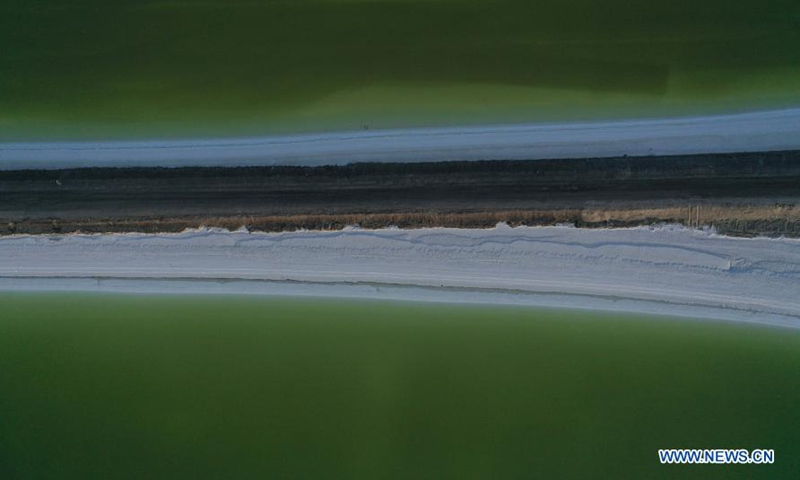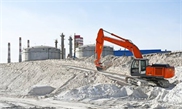
Aerial photo taken on Nov. 27, 2020 shows the Qairhan Salt Lake in northwest China's Qinghai Province. Qairhan Salt Lake, covering more than 5,800 square kilometers in Qinghai, boasts deposits of more than 60 billion tonnes of various resources, such as potassium, sodium, magnesium and lithium. (Xinhua/Zhang Long)
Chinese magnesium prices have returned to normal as suppliers across the country resume work, with most of the producers in Yulin, Northwest China's Shaanxi Province, one of the world's largest magnesium production bases that supplies up to 50 percent of global consumption, operates in full swing now.
Magnesium output and exports dropped due to multiple reasons, including the restrictions on output after some industrial facilities, including magnesium plants, were categorized as high-emission units. That pushed prices to record highs. But the situation has eased since coal supplies were secured, industry insiders said.
Some reports claimed that global manufacturers "rue their dependence on China" for supplies of magnesium as they ran into another headache in their supply chain after the price of magnesium spiked, highlighting their vulnerability to policy shocks in China, according to Nikkei on Monday.
Such claims were refuted by several industry insiders who said that they have ramped up efforts with extra working hours to secure market supply.
Yang Li, a trade manager with a large magnesium supplier in Yulin, told the Global Times on Monday that most of the companies including theirs are operating in full swing to churn out more magnesium for exports, mostly to Japan, South Korea and European countries.
Demand has been so strong after production resumed and prices have stabilized that "their orders for this month were fully booked up," Yang said.
Because there were no spot goods left after inventories were sold, many magnesium producers are providing futures, and demand is still outpacing supply, industry insiders said.
Tougher environmental protection technical reforms for enterprises were among the reasons for the decline in production in the third quarter, experts said.
But even in September, the so-called "cut-off" of the basic demand for the magnesium market claimed by some foreign media outlets did not happen. Compared with the same period last year, China's cumulative output and export volume of magnesium increased from January to September, media reports said.
Driven by resilient demand, the magnesium price rose from 32,000 yuan per ton about a week ago to 35,000 yuan as of Monday, while there may be some fluctuation in the coming days, Yang said.
"But the capped coal price achieved by policy intervention has made bulk commodities, including magnesium, return to rational levels, and it would be very hard for the price of magnesium to return to the peak level seen in September," Yang said.
Liu Hao, analyst at industrial data provider SMM, told the Global Times on Monday that "the current price hike is a short-term phenomenon and the prices have fallen for some time."
With the government's efforts to secure coal supplies and cap high prices of bulk commodities, the price of magnesium has fallen to a low ebb of about 35,000 yuan per ton compared with the nearly 70,000 yuan historic high seen in September, even though global market demand remains strong.
Now that the price of magnesium has come down, the supply has kept strengthening, and global customers are placing orders much faster, Liu said, forecasting a possible increase in export volume for the rest of the year.
China accounts for 85 percent of the global output of magnesium metal, and the production capacity of Yulin accounts for 50 percent of the global consumption, industry data shows.
The average operating rates of the nation's magnesium plants are in a range of 50-60 percent, meaning they are not fully open yet, Liu said, and there is bigger potential to be unleashed when it is needed.

